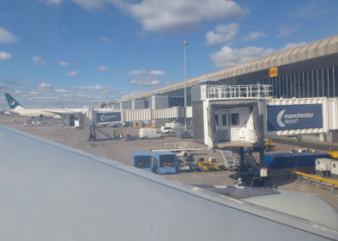
Getting around from day to day and going on holiday make up a huge chunk of most people's carbon footprint.
Follow our tips below for sustainable tourism and travel, and reduce your carbon footprint from the trips you make, whether at home or away.

Your car
When it’s time to change your car, go shopping with carbon emissions in mind.
An electric car is the top choice here. More people than ever before are now making the shift to electric vehicles – both cars and vans. The infrastructure to support them, including chargepoints, is rapidly growing. As well as saving money on fuel compared to a petrol or diesel vehicle, you’ll also save on maintenance costs. They are more expensive to buy than their petrol/diesel equivalents, but you should save in the long run. There’s a growing secondhand market, too, so you’re not limited to buying a new vehicle. The Fully Charged Show on YouTube is one of many great resources for finding out more about these very clever vehicles. For anyone who likes to really get into the detail, Plug Life Television on YouTube is superb.
The next best option is a hybrid vehicle, which uses both petrol/diesel and electric.
Otherwise, if you’re going for a petrol/diesel vehicle, choose one with low emissions. Newer and smaller cars tend to have lower emissions, but check the manufacturer’s website because it’s not always that simple! Lower emissions often mean better fuel economy, so you’ll save money on your fuel bills, too.
Holidays & travel
 Holidays can make up a big chunk of your personal carbon footprint. In fact, tourism overall accounts for about 8% of the world’s carbon emissions.
Holidays can make up a big chunk of your personal carbon footprint. In fact, tourism overall accounts for about 8% of the world’s carbon emissions.
It’s a game of two halves:
- How you get to your holiday destination
- Where you stay and what you do when you’re there
Most of your holiday’s carbon footprint comes from getting there.
OK, let’s get the obvious one out of the way first… flights. They are the biggie when it comes to your environmental impact. A return flight from London to New York could make up almost a quarter of the average person’s annual emissions.
The answer isn’t to take more short flights instead. They produce more CO2 per mile, because of the amount of fuel used for taxi-ing, take-off and landing.
Aviation is becoming a lot more energy efficient, but the fact remains… if you really want to take a bite out of your carbon emissions, take fewer flights.
If you really want to compare the carbon footprint of an overland journey versus a flight, it’s a bit tricky. And you’d have to decide whether you include hotel nights and other incidentals that an overland journey might require, for example. We haven’t found any online tools that would help, but there’s a good article about this on the Seat61 website: Trains vs Planes.
